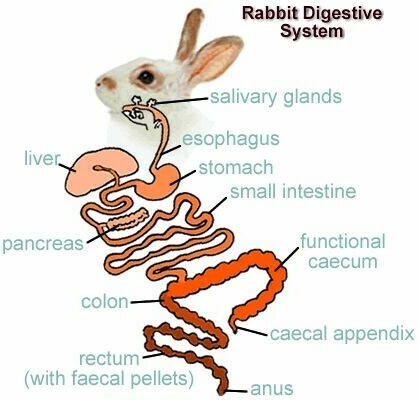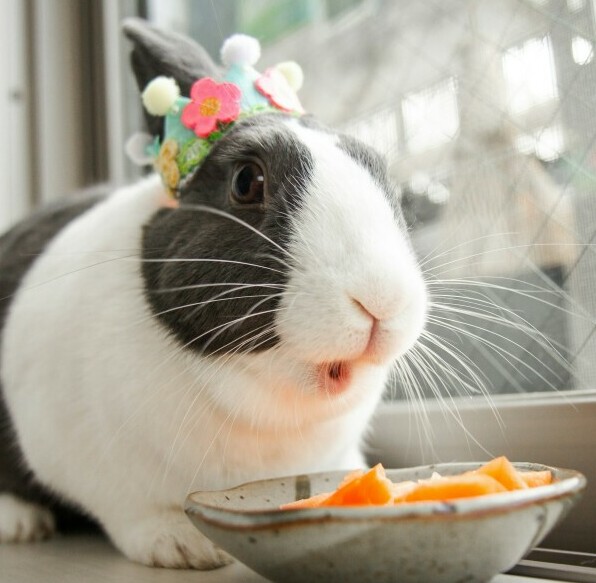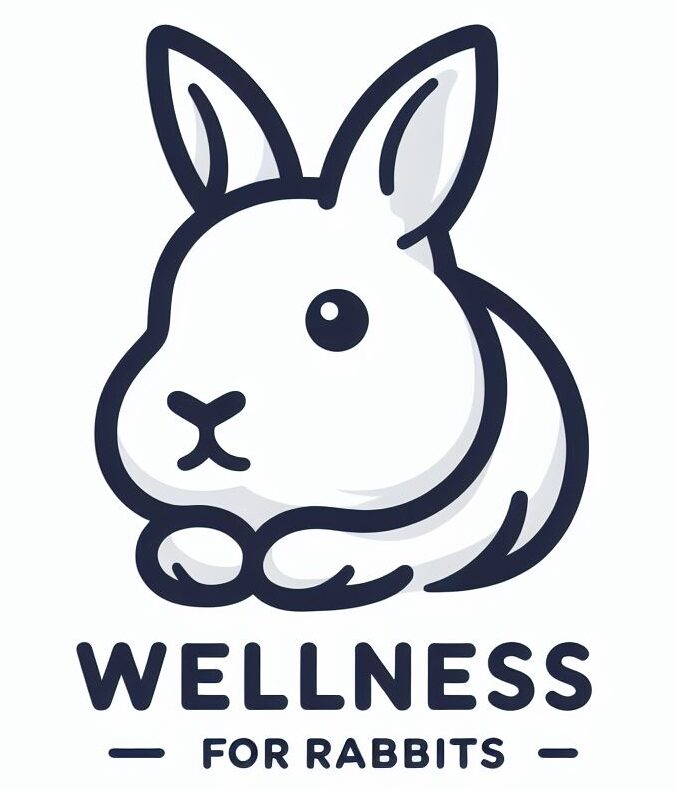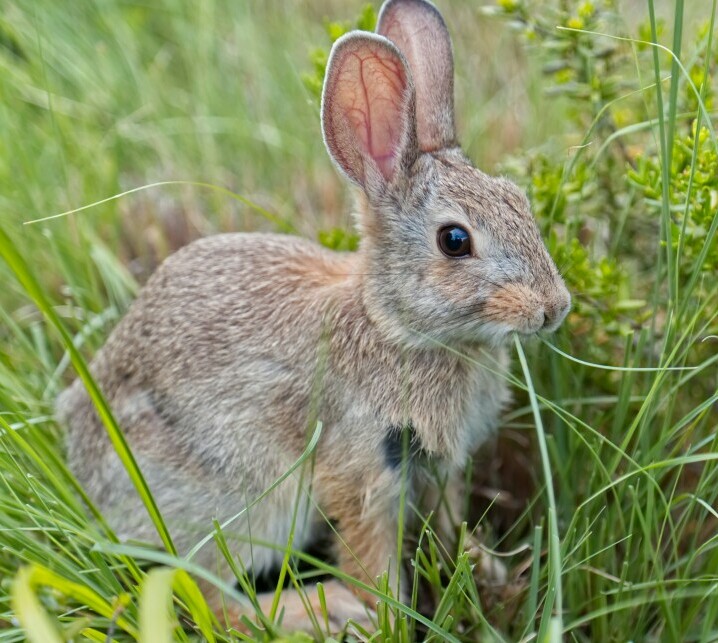Rabbits have a unique digestive system in that they are herbivores and more specifically they are hind-gut fermenters. This means they have a much different gastrointestinal tract (GI Tract) than most pets. Understanding the rabbit’s digestive system plays a big role in how we take care of them as pets and because of this, we must tailor their food accordingly.
Introduction to the Rabbit Digestive System
When looking into the rabbit digestive system the first thing you will find is that rabbits are herbivores which means they only eat plants. This is another unique aspect that makes rabbits different from dogs and cats which are carnivores. It is important to know because the digestive system controls many other areas of the body’s health not only what to eat. It regulates mood, energy, hormones, sleep, immune system, etc.
The herbivore diet is unique because it is a long digestive tract that allows for slow digestion with enough time to fully decompose and break down the food. Plants have a component called cellulose which is found in the cell wall and it is difficult to break down. Because of this, the GI tract needs time to fully digest and break it down. Since the digestive system takes longer to break down and absorb nutrients, herbivores need to be “grazing” for most of the day to make sure they are getting enough nutrients and have enough energy.
The Anatomy of Rabbit Digestion
Not only are rabbits herbivores but they are also hind-gut fermenters. Hind-gut fermenters are animals that have a simple stomach with a very long and complex large intestine. The large intestine is where the food spends most of its time in the GI tract because of the way it needs to be fermented and broken down.

Primary Components of the GI Tract:
- Mouth: Rabbits need to be “grazing” for most of the day to keep the digestive system moving, because of this they spend a lot of time chewing to make sure the food is broken down as much as possible before it enters the system.
- Esophagus: This is where the food travels from the mouth to the stomach.
- Stomach: In the stomach, the food has its first interaction with stomach acid which breaks down the food further before traveling to the small intestine.
- Small Intestine: When food enters the small intestine it encounters specific enzymes that help with digestion and absorption of minerals.
- Large Intestine (colon, cecum, rectum): This is where the material that has been fully depleted of vitamins and minerals gets processed into feces. The cecum is where food encounters microbial fermentation. The colon is where water and electrolytes are absorbed. The rectum is where the accumulation of feces happens. After these three processes, the feces have been distinguished between hard round feces and caecotrophs.
You may be wondering, what are caecotrophs? They are a unique type of feces that is rich in minerals, vitamins, protein, water, and bacteria. They are specifically designed for re-ingestion, so in other words… rabbits eat this type of poop to re-absorb certain minerals that they lose.
The Rabbit Diet: Essentials for Healthy Digestion
Being that rabbits are herbivores and they get all their nutrients from plants, they must get enough fiber and minerals to function properly. The area of their diet where they get most of these nutrients is hay. Hay contains long strands of fiber that help the GI tract move smoothly. Without hay, a rabbit’s digestive system would slowly shut down due to a lack of fiber and protein, this is called GI stasis. Hay should make up about 80% of a rabbit’s diet because it is the most important factor in keeping their digestive system healthy and functioning.
The next way rabbits can get fiber and nutrients in their diet is through leafy greens. Greens don’t have as much fiber but they are more nutrient dense. Rabbits need a variety of greens to keep the diversity in the nutrient content, this can be through different spring mixes, lettuce, fresh herbs, etc. Even though it is very important to have different kinds of greens, they should still only make up about 15% of their diet because hay is still the backbone of the diet and rabbits need it throughout the day. Your bunny will likely get much more excited over greens than hay but it is very important to encourage hay not only for digestion but also for the teeth. Rabbits’ teeth are like fingernails in that they never stop growing, hay keeps the teeth trimmed down and prevents them from overgrowing.

Pellets are also important because they are essentially a very concentrated form of nutrients and calories. You might be wondering, “If pellets are simply an easy form of nutrients why do I need to feed my rabbit anything else?”. Unfortunately, while pellets are the quickest and easiest form of food to give a rabbit, high quantities will quickly lead to obesity. Rabbits need a great variety of nutrients and fiber in their diet and relying only on pellets will only provide a portion of those vitamins. As stated above, hay is the most essential part of a rabbit’s diet and pellets cannot replicate that.
Even though rabbits should have a variety of greens and vegetables in their diet they cannot have any “people food” at all. Any sort of grains, dairy, meat, sweets, or processed food will not be able to be digested in a rabbit’s sensitive digestive tract and will cause blockage.
Common Digestive Issues in Rabbits
The most common and dangerous digestive issue for rabbits is Gastrointestinal stasis (GI stasis). GI stasis is a life-threatening condition that is the slowing or stopping of the digestive system. It is caused by a low-fiber diet or consumption of blocking foods. GI stasis can be treated if detected early enough, however, if left untreated it is deadly.
There are some common signs to be aware of so that if you notice them you can treat them as soon as possible.
Not eating or drinking: If you notice your rabbit has stopped eating or drinking this is a sign that they are experiencing GI stasis and they should be brought to the vet immediately. Even if it has only been a few hours of not eating it is never to early to take them to the vet.
Not pooping: Rabbits normally poop ALOT so if you notice your rabbit has stopped going to the litter box or pooping completely this is a major sign that your rabbit is in GI stasis. If your rabbit is experiencing GI stasis their digestive system will be slowed or stopped completely and therefore they will be unable to produce any fecal pellets. If you notice your rabbit has not gone to the bathroom for at least 5 hours, take them to the vet as soon as possible.
Lethargic: If your rabbit is not moving around like normal and is remaining in the same spot for long periods this is a sign they could be in GI stasis. When in pain, rabbits will try to stay as still as possible so as to not make the pain worse. However, all rabbits have different energy levels, some naturally are less energetic but if your rabbit is unusually lethargic or sluggish, take them to the vet as soon as possible.
Unusual activity: All rabbits have different personalities and different energy levels but if you notice your rabbit acting weird or unusual it is always a good idea to take them to the vet because you never know what pain they could be trying to hide. Being that rabbits are prey animals, they try to hide their symptoms to not come across as weak to a predator. They protect themselves by acting normally, even when experiencing great pain. This is why as rabbit owners we have to pay extra attention to even the smallest of symptoms because it could be a sign of a much greater illness. Ultimately, no one knows your rabbit as well as you do so pay attention to body language and activity, if you see something unusual don’t hesitate to take them to the vet.
While this is a very extreme condition, there ways to prevent GI stasis in rabbits. The most important is to maintain a healthy diet full of fiber, protein, vitamins, and minerals. A balanced diet plays a major role in keeping the digestive system flowing healthily. Along with this, a rabbit’s lifestyle plays a major role in their health. Rabbits need proper enrichment and exercise to keep from becoming depressed, anxious, and destructive. If a rabbit’s quality of life is too poor they will be much more susceptible to getting sick or acquiring a disease. Another way to prevent GI stasis is by making sure your rabbit is hydrated. Dehydration can cause the intestinal organs to slow or shut down in severe cases so it is very important to make sure your rabbit drinks enough water.
Supporting Your Rabbit’s Digestive Health
As stated above, the best way to support your rabbits’ digestive health is through maintaining a healthy lifestyle. Rabbits can easily slip into depression, stress, and anxiety if they are not receiving proper care and enrichment. When rabbits become stressed their body begins to go into panic mode and slowly shut down. The best way to prevent this is to make sure they have a healthy balanced diet and are being mentally and physically stimulated through proper enrichment and play.
On top of a healthy lifestyle, it is important to have regular checkups from the vet to make sure your rabbit is healthy. Remember, even if your rabbit seems healthy they could be hiding sickness from you. It is always better to be safe than sorry and catch it sooner rather than later.
At the end of the day, the best way to monitor your rabbit’s health is simply by spending time bonding with them! You will be your rabbit’s best friend and you will know them better than anyone. Take the time to get to know your rabbit’s personality and you will be able to know when something is off or not.
If you have any questions or comments please leave them below and I will be happy to help!

